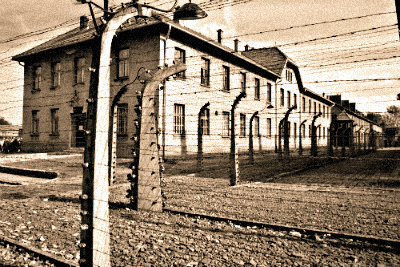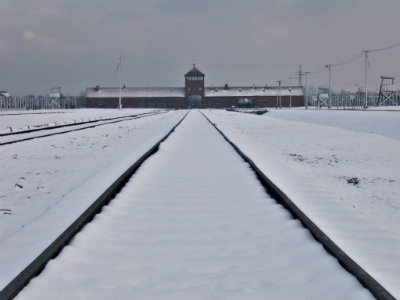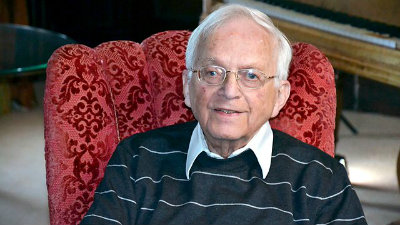Get to know the story of Freddie Knoller, the Jew who was offered a job by the Nazis, survived internment in Auschwitz and triumphed over a death march carried out in sub-zero weather conditions.
170,000 Jews resided in Vienna before WWII broke out. However, that number was cut into a mere 6,000 when the conflict ended. Freddie was one of the fortunate Jews to have survived the deathly grip of the Nazis.
The Offer
July 1943 – that month saw the twenty-two-year-old Jew working in the Nazi-occupied Paris. He was able to do so because of the false papers he had. His job was to introduce Nazi soldiers to the city’s brothels. It was also that time, he recounted, that two men wearing hats and black coats made of leather came to him. Turned out they were members of the Gestapo. He was taken in for interrogation.
Knoller went on to say that he was taken to the Gestapo headquarters, to a room where a portrait of the German dictator Adolf Hitler hung imposingly on one wall and a human plaster head was sitting on the table of the officer who quizzed him.
When the Nazi officer saw Knoller looking at the said object, he explained that it was a plaster head fashioned from a head of a Jew. He went on to say that they, the Gestapo, were taught to recognize Jews through the structure of their heads. After saying that, he immediately went behind Knoller, took the head of the Jew between his two hands and started tracing it.
I am not ashamed to admit I wet my pants that time as I was so sure he was going to know I am a Jew, Knoller admitted.
But to his shock, when the officer handed out his verdict, he said Knoller was of a reputable German background. He, then, went on to offer the Jew a job — join the Gestapo as an interpreter enticing him that he would be earning money and would be working with his own people at the same time.
Knoller was so amazed that he was able to escape the grasps of death and was even more flabbergasted that the Gestapo really offered him a job within their organization. A Jew under the enemy’s umbrella!
However, Knoller had no intention of accepting the job offer and quickly, the Jew made himself scarce, hiding away from the members of the association.
![The Young Jew: Freddie Knoller [encircled] with his family --- his father, mother and two other brothers.](https://www.warhistoryonline.com/wp-content/uploads/sites/64/2015/02/The-Knoller-Family.jpg)
The Jew decided to go to France, partly because, after reading all the naughty books about the place – of Montmarte and Moulin Rouge – he wanted to experience that.
Nevertheless, before he could get into France, he was arrested in its borders due to his German passport. May 1940 saw him imprisoned in a prison house intended for France’s enemies. But when the Nazis invaded the country a month later, he was able to escape imprisonment and eventually made his way to Paris’ bright lights. He thought he was safe in the city; his confrontation with the Gestapo changed that.
Working for the Resistance
So, instead of accepting he work the Gestapo offered, the Jew asked a friend for help and the latter introduced him to the leader of the French Resistance. He became part them, went to live in the mountains of southern France and fought the Germans in every way.
It was one of the highest points of his life, Knoller said. He was happy fighting the Germans off instead of joining them. But that happiness was short-lived. His lady love, Jacqueline, betrayed him to the Gendarmes after they argued.
While in Auschwitz…
He went through a bitter torture and the pain compelled him to divulge his true identity — that he was a Jew. He was, then, handed over to the Gestapo and on September 1943, he was sent to Auschwitz. He spent the rest of his days there until WWII was nearly over.
The Jew endured hard labor under extremely low temperatures with whips behind him if he worked too slow for the guards’ liking. Everyday, though, he showed the guards that he was okay working and always went to the right side when the prisoners were lined in front of the SS. He knew that being in the left line meant death in the gas chambers.
The Death March
When January 1945 rolled in, Germans knew the Russian troops were fast approaching. Because of this, Auschwitz prisoners were promptly evacuated. Knoller, along with the others, were forced to march 50 kilometers heading to the town of Gleiwitz in a freezing cold weather — it was a march to their death.
As he recounted, the German guards surrounded the prisoners. Those who couldn’t walk anymore were shoot as those who fled to the woods. There were about 60,000 Auschwitz prisoners forced into these death marches; more than 15,000 of these did not make it to the end.
As for Knoller, he said that he just walked and walked without thinking about anybody else. Like the others, he saw prisoners being killed on the way but he didn’t let that affect him. His only thought was to stay alive and keep walking and that he did.
The prisoners who survived the death marches, Knoller included, were loaded into trains and sent off to Bergen-Belsen. Here, the Jew stayed until its liberation by the British soldiers on April 15, 1945. When Knoller was freed, he only weighed 41 kilograms or a little over six stones.
One Proud Jew
After WWII, KNoller went to the US, got reunited with his two brothers then met and married his British wife, Freda. The couple eventually settled down in London.
The following three decades, Knoller kept mum about his war experiences. However, with the gentle persuasions of his children, the Jew was able to go past his past wounds and speak about the times he went through during the Second World War – both the good and the bad.
In 1995, Knoller learned about his parents’ plight. They were deported from Vienna in 1942 and were, coincidentally, interred in Auschwitz the same time as he was. Sadly, though, he wasn’t able to meet them until their deaths in 1944. They were killed.
As his wartime experiences, the Jew has always felt proud about them. he is proud that he fought for his life and triumphed in the end. And now, he is glad to be alive and share his story to the world.



